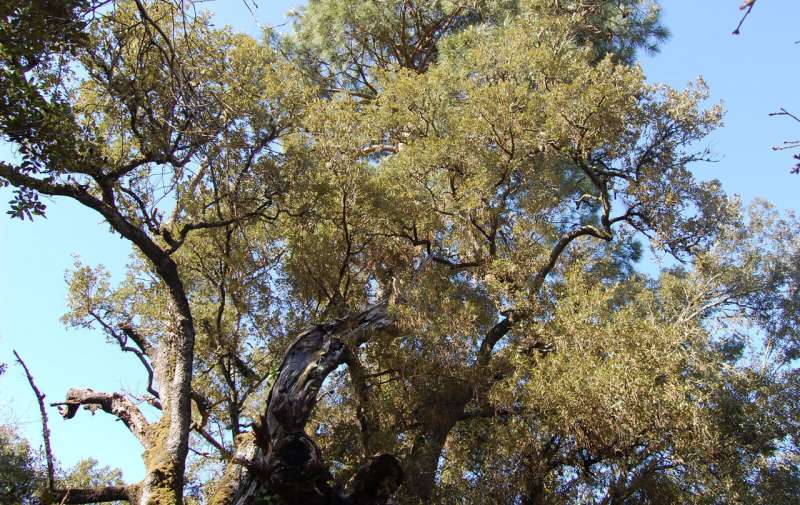Credit: INRAE/Sylvain Delzon
As climate change brings an increase in the frequency and severity of droughts, forest dieback is a key cause for concern: forests act as reservoirs of biodiversity and also allow vast amounts of carbon to be stored, reducing the so-called greenhouse effect. Oak trees, iconic veterans of European and American forests, have previously been thought to be highly vulnerable to drought. Now, thanks to a novel non-invasive optical technique, scientists from INRAE and the University of Bordeaux in France, with their colleagues from University of California, Berkeley and Stanford University have studied a range of oak species in North America to find out more about their resistance to drought. The results, published on 1st March in PNAS, show an evolutionary increase in the drought resistance of oak species which has enabled them to colonize more arid climatic zones and to develop what are, for now, relatively comfortable safety margins to cope with climate change.
A determining factor in the drought tolerance of trees is the capacity of the xylem (the network of vessels carrying water and nutrients from the roots to the leaves) to resist embolism. Indeed, when such vessels become obstructed by the air bubbles that tend to form during dry periods, this may lead to the death of the tree. An optical technique developed in Australia in 2016 (Brodribb et al 2016 PNAS) and implemented in the INRAE PHENOBOIS1 platform, has been used by the international team to quantify embolism resistance of leaf vessels of twenty or so oak species growing in the Western coastal strip of the U.S.. The species are distributed along the full aridity gradient for the area, which features some extremely arid habitats. The embolism resistance measurements of a tree's vessels obtained in this way make it possible to quantify the tree's tolerance of drought. The study seeks to gain a better understanding of the evolutionary pathways of forest species and to predict how forests will respond to climate change. Oaks were selected for the case study because of the prevalence of this botanical genus across many regions of the northern hemisphere.
An adaptability to local climate conditions
The first piece of good news is that oaks are far more drought tolerant than has previously been thought. The team observed that the levels of resistance to water deficit in the different species of oak matched the precipitation and aridity gradients of the American North West. Those species most able to tolerate water stress are closely related to each other, occupying the same section of the oak's phylogenetic tree and growing in the more arid zones, while less drought-tolerant oak species were found in the wetter zones. These results suggest that, as they have evolved, oaks have been responsive to climate and have colonized geographical zones where the climate corresponds to their drought tolerance levels.
By correlating their measurements of drought tolerance in the selected oaks with site-specific data on tree water stress, the researchers were able to calculate the hydraulic safety margin for each species. A positive safety margin indicates that the species could survive in an even drier climate, while a negative safety margin suggests vulnerability to drought. Fortunately, the safety margins for the 19 species studied were found to be positive, even for those growing in the driest zones, indicating that these oak species are not currently at risk.
The results from this study of Californian oaks are encouraging and provide key information that will improve predictions of the future dynamics of forest biodiversity and carbon stocks as the climate continues to change. The methodologies used here can be applied to other species and the research team has now extended its investigations to European oaks and Californian sequoias.
More information: Robert P. Skelton et al. Evolutionary relationships between drought-related traits and climate shape large hydraulic safety margins in western North American oaks, Proceedings of the National Academy of Sciences (2021). DOI: 10.1073/pnas.2008987118
Journal information: Proceedings of the National Academy of Sciences
Provided by INRAE
























